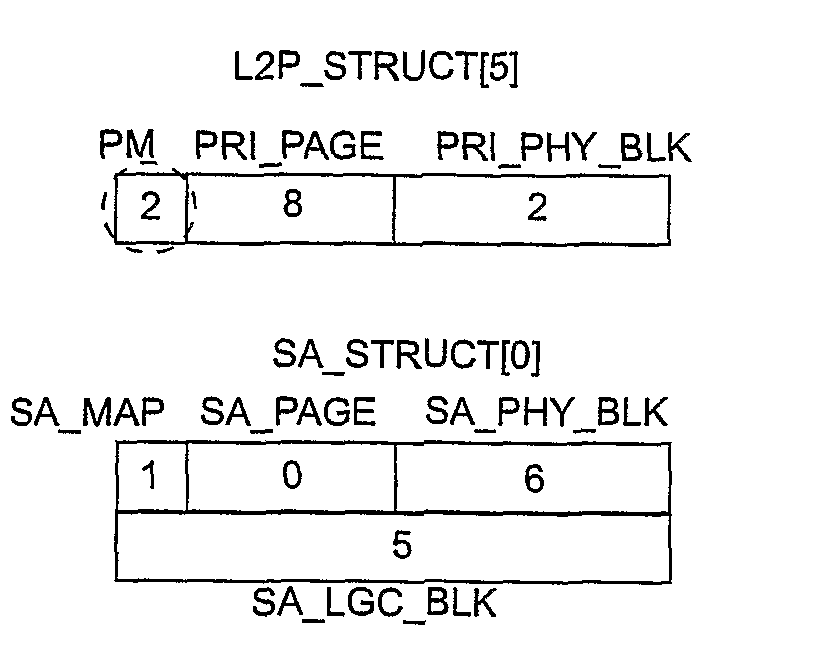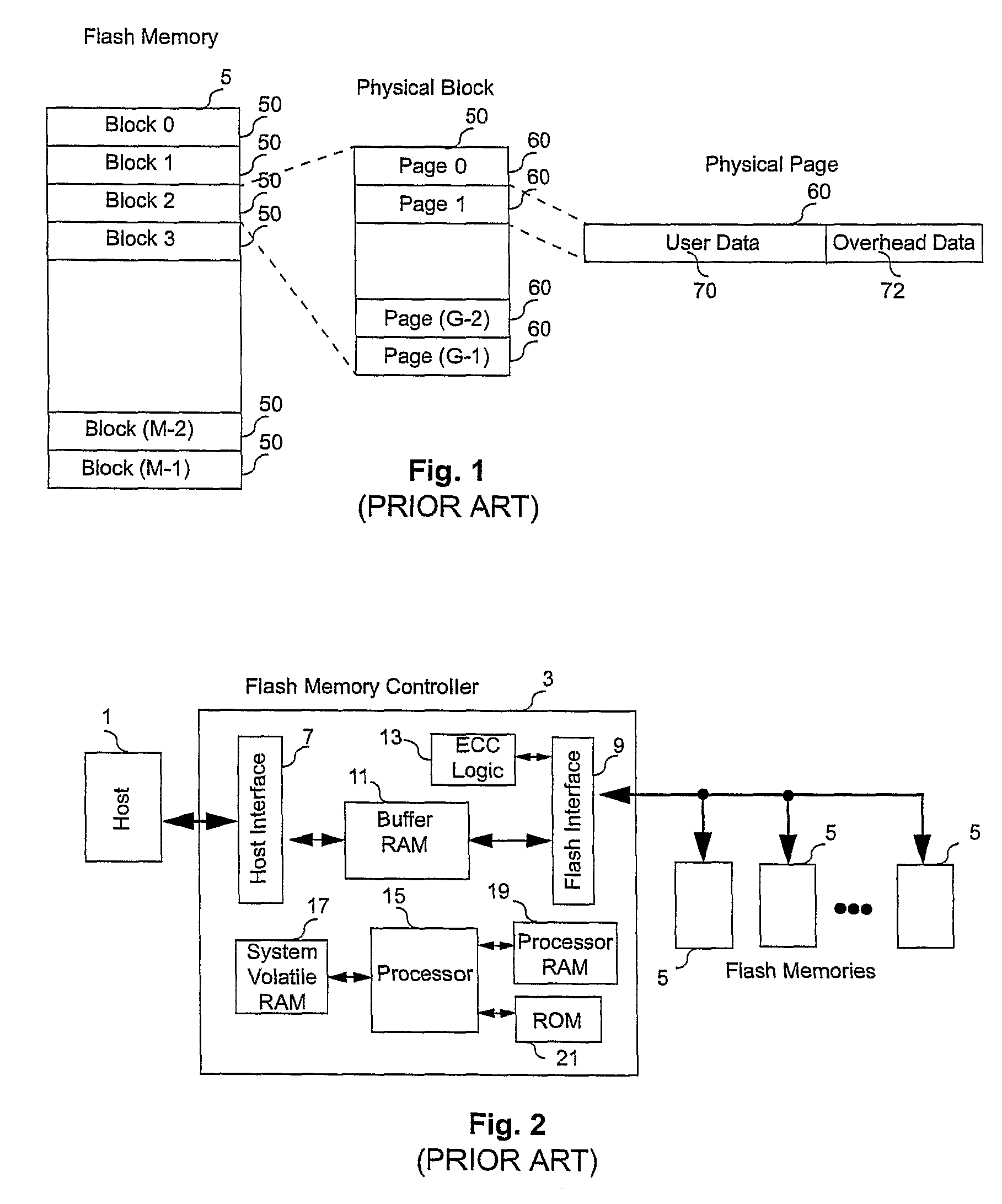Controller for non-volatile memories and methods of operating the memory controller
a non-volatile memory and controller technology, applied in the field of data storage systems, can solve the problems of flash physical page having to be erased, the efficient mapping algorithm of flash memory having multi-paged blocks has not been satisfactorily developed, and the previous stored data is erased, so as to reduce page copy operations and increase the performance of the system
- Summary
- Abstract
- Description
- Claims
- Application Information
AI Technical Summary
Benefits of technology
Problems solved by technology
Method used
Image
Examples
Embodiment Construction
[0096]An embodiment of the present invention will now be described. The flash memory system typically has blocks shown in FIG. 3a, and the corresponding elements of the embodiment are given the same reference numbers as in FIG. 2. All elements shown in FIG. 3a are the same as FIG. 2, except that there is an additional system NVRAM memory device 23 incorporated into the flash controller. In FIG. 3a, the system NVRAM 23 is illustrated as a component within the flash controller 3, e.g. provided as part of a single integrated circuit which also integrates the other components of the flash controller 3. However, optionally, the NVRAM memory device 23 may be an external component connected to the flash controller 3 via a dedicated interface port.
[0097]One possible form of the embodiment is to assemble the flash controller 3 and the flash memories 5 into a single physical unit such as a memory card or a flash drive, and the interface to the host 1 (e.g. a personal computer) comprises a mat...
PUM
 Login to View More
Login to View More Abstract
Description
Claims
Application Information
 Login to View More
Login to View More - R&D
- Intellectual Property
- Life Sciences
- Materials
- Tech Scout
- Unparalleled Data Quality
- Higher Quality Content
- 60% Fewer Hallucinations
Browse by: Latest US Patents, China's latest patents, Technical Efficacy Thesaurus, Application Domain, Technology Topic, Popular Technical Reports.
© 2025 PatSnap. All rights reserved.Legal|Privacy policy|Modern Slavery Act Transparency Statement|Sitemap|About US| Contact US: help@patsnap.com



